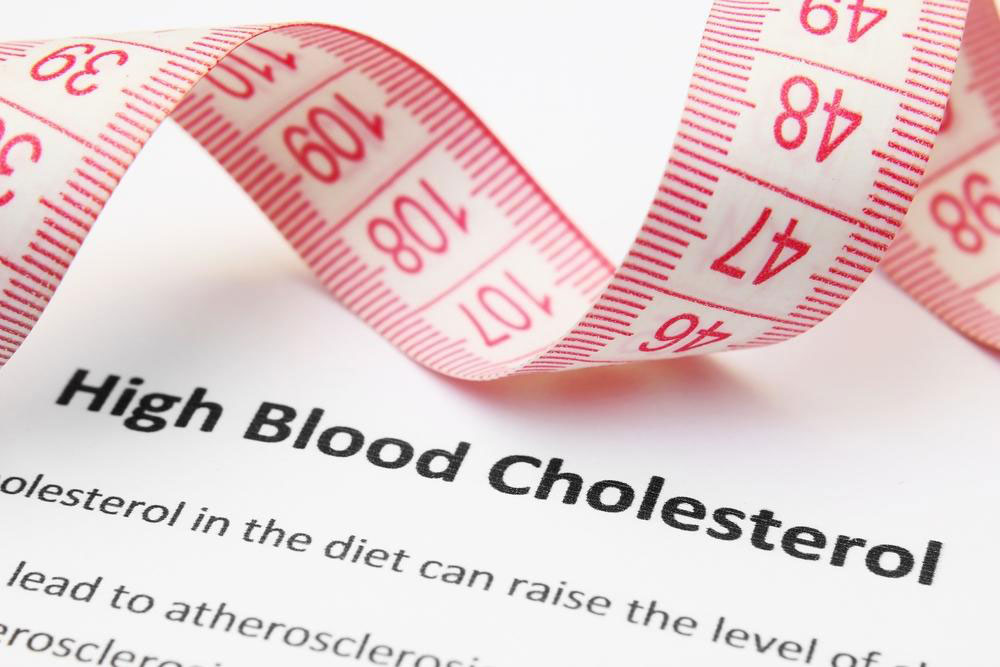High Cholesterol – Symptoms and Treatment Options
Cholesterol is a thick and waxy, fat-like substance widely found in every cell of the body. Produced by the liver, cholesterol is essential for the production of certain hormones, vitamin D as well as some substances that aid in digestion.
Cholesterol is transported through the bloodstream by small particles called lipoproteins. Healthy cholesterol levels protect an individual against heart diseases. However, at the same time, if the level of cholesterol rises beyond a certain limit, it can build up in the arteries and become the cause for a heart attack or stroke.
There are two types of lipoproteins — low-density lipoproteins (LDL), which causes heart diseases, and high-density lipoproteins (HDL), which returns the LDL cholesterol to the liver for elimination from the human body.

If the level of LDL cholesterol is high, or the level of HDL cholesterol is low, fatty deposits can build up in the blood vessels, leading to a blockage of the arteries. This condition is called high cholesterol. Thankfully, there are plenty of treatment options that help in controlling the LDL cholesterol levels.
Common symptoms of high cholesterol
There are no visible symptoms of high cholesterol. So, an individual could have this condition and yet know nothing about it.
If a person has high cholesterol, their body will store all the excess cholesterol in the arteries. Arteries are responsible for transporting blood from the heart to the rest of the body.
In case the arteries that supply blood to the heart muscles get blocked, a person can have a heart attack. Similarly, if there is a blockage in the artery that delivers blood to the brain, a person experiences a stroke.
Apart from this, high cholesterol often causes an unusual pain in the chest as well as pain while walking as the arteries are unable to supply an adequate amount of blood to the legs.
Some effective treatment options for high cholesterol
Medications
Usually, all doctors prescribe lifestyle changes and regular exercise to lower the cholesterol levels. However, if these remedies are unable to fetch results, they may prescribe medications to bring down the LDL cholesterol levels. They will examine your physical state and study your medical history before prescribing any cholesterol medications.
Exercise
Regular exercise can boost HDL cholesterol and decrease the levels of LDL. One should indulge in 30 minutes of moderate exercising, 5-7 days a week. Brisk walking, yoga, swimming, aerobics, jogging, and bicycling are some activities that can help in reducing LDL cholesterol levels.
Exercise coupled with a healthy diet is one of the best treatment options for high cholesterol.
Quit smoking
Smoking has a negative impact on HDL cholesterol levels. Moreover, smoking compounds the risk and likelihood of heart diseases by affecting a person’s blood pressure. It is also extremely harmful to diabetic patients and increases the chances of coronary heart diseases.
If you quit smoking, you can lower your cholesterol levels and prevent the blockage of arteries. It is also advisable to avoid passive smoking.
Losing weight
People whose weight exceeds the ideal body weight tend to have high levels of LDL cholesterol. Thus, shedding those extra pounds is one of the best treatment options for high cholesterol.
Eating a well-balanced and heart-healthy diet
Reducing the intake of saturated fats and trans-fats is the best way to treat high cholesterol. According to the American Heart Association, an average person’s saturated fat consumption should not be more than 5 to 6 percent of their daily calorie intake.
One can make the following dietary changes to lower their cholesterol levels:
- Avoid consuming products such as fried foods, red meat, sugary foods, beverages, and full-fat dairy products.
- Consume foods rich in omega-3 fatty acids such as tuna, mackerel, and salmon.
- Eat more fruits, vegetables, poultry, whole grains, and nuts.
- Cook food with healthy oils, such as vegetable oil.
Newer treatments
Sometimes, doctors prescribe relatively new medicines such as alirocumab or evolocumab to people who do not respond to regular cholesterol medicines. These medicines are injected once every two weeks. They help the liver in removing cholesterol from the blood.
However, there is ongoing research to find out more about this treatment option for cholesterol.
When to see a doctor?
In case you experience any symptom of high cholesterol, it is best to consult a doctor. They may suggest getting a blood test done. Usually, people need to get retests once every five years.
If your test numbers are not within the desirable range, your doctor will suggest getting the test done frequently to measure the changes. They may also recommend frequent testing if there is a family history of heart disease, high cholesterol or diabetes. However, dietary and lifestyle changes can be the headstart toward a healthy heart as it is one of the most effective and convenient treatment options for high cholesterol.

